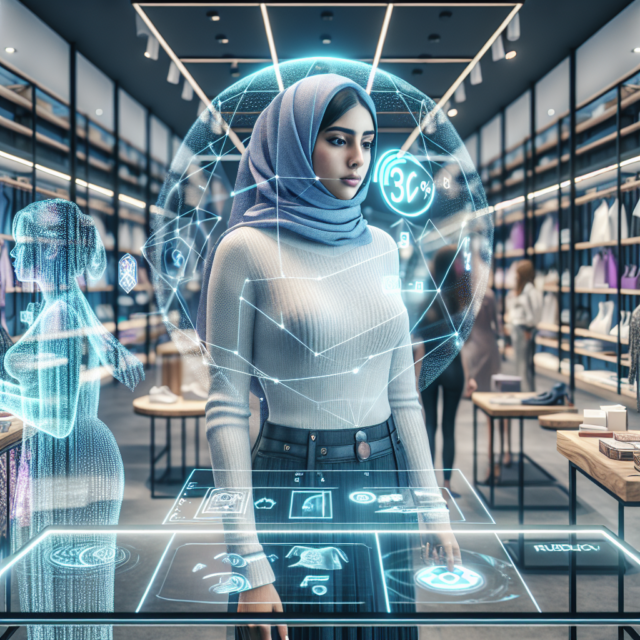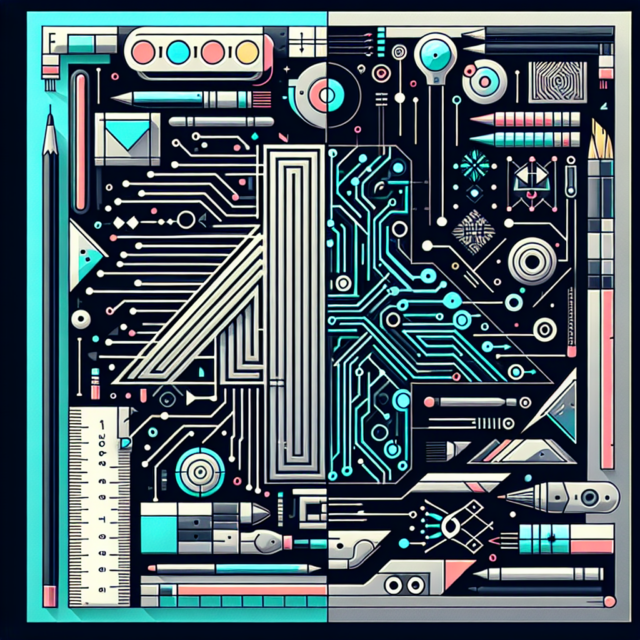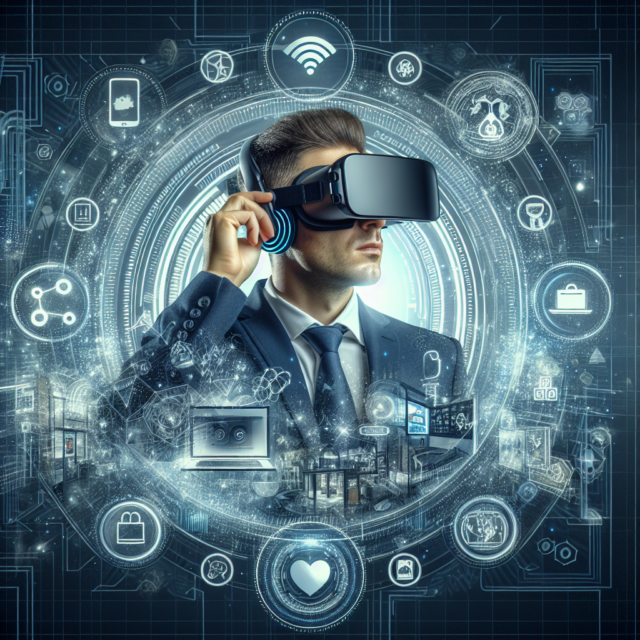In recent years, the retail sector has witnessed a technological revolution, with Augmented Reality (AR) emerging as a transformative force. This technology not only enhances the shopping experience but also reshapes the way retailers and customers interact. As the lines between the physical and digital worlds blur, AR offers innovative solutions to longstanding challenges in the retail industry. This article examines the impact of AR on customer experience across three key areas: transforming retail environments, elevating shopper engagement, and bridging the gap between physical and digital retail spaces.
Transforming Retail Environments with AR Technology
Augmented Reality is redefining the landscape of retail environments by introducing immersive and interactive elements. Traditional retail spaces, which once relied solely on physical displays and in-store marketing, now have the opportunity to integrate digital content seamlessly. Retailers can overlay virtual images and information onto real-world settings, offering customers a richer and more informative shopping experience. This transformation allows for dynamic product displays that can be updated in real-time, keeping customers engaged with the latest offerings.
The integration of AR into retail environments also enables more personalized shopping experiences. By utilizing data gathered from customer interactions, retailers can tailor AR content to individual preferences. This personalization goes beyond simple product recommendations, allowing customers to visualize how products fit into their lives. For instance, customers can use AR to see how furniture would look in their homes or how clothes would fit their body type, making the shopping experience more relevant and satisfying.
Moreover, AR technology can significantly enhance the efficiency of retail operations. By providing virtual navigation and assistance within stores, AR can help customers locate products quickly, reducing the time spent searching and increasing overall satisfaction. Additionally, AR can streamline inventory management by offering employees a virtual view of stock levels and product locations, optimizing store operations and reducing out-of-stock situations.
AR also transforms the retail environment by creating opportunities for experiential marketing. Retailers can design interactive experiences that captivate customers and encourage them to spend more time in-store. For example, AR-powered games or challenges can be integrated into the shopping experience, providing entertainment and engagement that extend beyond traditional shopping activities.
The ability of AR to provide detailed product information on demand is another key advantage. Customers can access specifications, reviews, and even tutorials by simply pointing their devices at a product. This immediacy of information empowers customers to make informed decisions, enhancing their confidence and satisfaction with their purchases.
Finally, AR helps bridge the gap between online and offline retail channels. By integrating AR into physical stores, retailers can offer customers the benefits of online shopping, such as detailed product information and virtual try-ons, while maintaining the tactile experience of shopping in-store. This hybrid approach not only enhances customer experience but also drives foot traffic to brick-and-mortar locations.
Elevating Shopper Engagement Through Augmented Reality
Augmented Reality plays a crucial role in elevating shopper engagement by providing interactive and immersive experiences that capture attention and stimulate interest. Unlike traditional retail methods, AR allows customers to interact with products in a virtual space, creating a more engaging and memorable shopping journey. This heightened level of engagement is crucial in today’s competitive retail landscape, where capturing and retaining customer interest is paramount.
One of the primary ways AR elevates shopper engagement is through virtual try-ons. Whether it’s clothing, accessories, or cosmetics, customers can use AR to see how products look on them without the need for physical samples. This not only enhances convenience but also encourages customers to explore a wider range of products, increasing the likelihood of purchase.
AR also allows for gamification in retail, which can significantly boost customer engagement. Retailers can incorporate AR-based games or challenges that reward customers with discounts, points, or exclusive offers. These interactive experiences not only make shopping fun but also foster a sense of loyalty and connection to the brand, encouraging repeat visits and purchases.
Interactive storytelling is another powerful tool enabled by AR. Retailers can create narratives around their products, allowing customers to engage with the brand’s story in a meaningful way. This storytelling approach not only informs customers about the products but also creates an emotional connection, enhancing brand perception and customer loyalty.
By offering real-time customization options, AR empowers customers to personalize products according to their preferences. Whether it’s changing the color of a car or customizing a pair of sneakers, AR provides customers with creative freedom, making the shopping experience more enjoyable and satisfying. This level of personalization can lead to higher customer satisfaction and increased sales.
Furthermore, AR enhances the social aspect of shopping by allowing customers to share their AR experiences on social media platforms. This not only amplifies brand visibility but also encourages word-of-mouth marketing, as customers share their unique and engaging shopping experiences with their networks.
Finally, AR facilitates a seamless transition from online to offline shopping experiences. Customers can start their shopping journey online, using AR to visualize products, and then continue their experience in-store. This continuity ensures that customers remain engaged throughout their shopping journey, regardless of the channel.
Bridging Physical and Digital: AR’s Role in Retail
Augmented Reality serves as a crucial bridge between physical and digital retail spaces, offering a cohesive and integrated shopping experience. In an era where customers expect seamless transitions between online and offline channels, AR provides the tools necessary to meet these demands, enhancing both convenience and satisfaction.
One of the primary ways AR bridges this gap is by integrating digital content into physical spaces. Customers can access digital information, such as product details and reviews, while browsing in-store, combining the tactile experience of shopping with the rich information available online. This integration allows customers to make informed decisions, enhancing their overall shopping experience.
AR also facilitates the creation of virtual showrooms, where customers can explore a wide range of products without the need for extensive physical inventory. This not only reduces the space and cost requirements for retailers but also offers customers the convenience of exploring a broader selection of products. Virtual showrooms can be accessed both in-store and online, providing a consistent shopping experience across channels.
The ability to provide virtual assistance is another significant advantage of AR in bridging physical and digital retail. Customers can receive instant assistance and guidance through AR applications, eliminating the need for physical staff for basic inquiries. This not only enhances customer experience but also allows retailers to optimize their workforce and allocate resources more efficiently.
AR also supports the concept of "endless aisles," where customers can browse and purchase products that are not physically available in-store. By using AR, customers can visualize and order products from the retailer’s entire catalog, ensuring they have access to the complete range of offerings. This capability helps retailers overcome the limitations of physical space, providing customers with a comprehensive shopping experience.
Furthermore, AR enhances post-purchase engagement by offering virtual tutorials and support. Customers can access AR guides for product assembly, usage, and maintenance, ensuring they have a positive experience even after leaving the store. This post-purchase support not only enhances customer satisfaction but also encourages brand loyalty and repeat business.
Finally, AR helps retailers collect valuable data on customer preferences and behaviors. By analyzing how customers interact with AR content, retailers can gain insights into consumer trends and preferences, allowing them to tailor their offerings and marketing strategies accordingly. This data-driven approach ensures that retailers remain competitive and responsive to changing customer needs.
As technology continues to evolve, the role of Augmented Reality in retail is set to expand even further. By transforming retail environments, elevating shopper engagement, and bridging the gap between physical and digital spaces, AR is poised to redefine the future of retail. Retailers who embrace this technology will not only enhance customer experience but also gain a competitive edge in an increasingly digital world. As AR becomes more accessible and integrated into everyday shopping experiences, it will undoubtedly continue to shape the retail landscape for years to come.





















